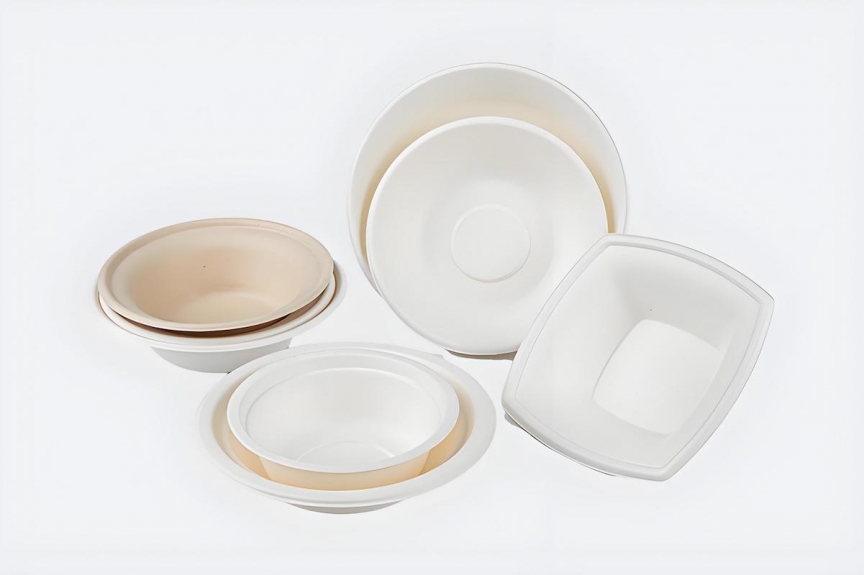In recent years, the demand for eco-friendly disposable cutlery has surged as consumers become more aware of the environmental impact of single-use plastics. Among the most popular alternatives are bamboo and sugarcane cutlery. This article explores the eco-friendliness of these two materials, comparing their sustainability, production processes, biodegradability, and overall impact on the environment.
Understanding Disposable Cutlery
The Rise of Disposable Cutlery
Disposable cutlery has become a staple in various settings, from fast-food restaurants to outdoor events. The convenience of single-use items is appealing, especially in our fast-paced society where time is often limited. However, the environmental consequences of plastic waste have prompted a search for sustainable alternatives. As a result, materials like bamboo and sugarcane have gained popularity due to their renewable nature and lower environmental impact. The shift towards eco-friendly options is not just a trend; it reflects a growing consciousness about our ecological footprint and the urgent need to protect our planet for future generations.
The Need for Eco-Friendly Alternatives
Plastic cutlery contributes significantly to pollution, taking hundreds of years to decompose. In contrast, eco-friendly options like bamboo and sugarcane offer a solution that aligns with the growing demand for sustainable practices. Understanding the properties and benefits of these materials is essential for making informed choices. The urgency of finding alternatives is underscored by the alarming statistics regarding plastic waste in oceans and landfills, which threaten wildlife and ecosystems. By opting for biodegradable materials, consumers can play a crucial role in reducing this environmental burden.

Bamboo Cutlery
Characteristics of Bamboo
Bamboo is a fast-growing grass that can reach maturity in just three to five years. This rapid growth makes it a highly renewable resource, allowing for sustainable harvesting practices. Bamboo cutlery is known for its strength, durability, and lightweight nature, making it an excellent alternative to plastic. Additionally, bamboo has natural antibacterial properties, which can enhance food safety. Its aesthetic appeal, with a natural finish and unique grain patterns, also makes bamboo cutlery a popular choice for eco-conscious consumers who appreciate both functionality and design.
Production Process
The production of bamboo cutlery involves harvesting the bamboo stalks, which are then cut into the desired shapes. The cutlery is typically treated with food-safe finishes to enhance durability and resistance to moisture. This process is relatively low-impact, as bamboo requires minimal pesticides and fertilizers during cultivation. Furthermore, many manufacturers are adopting sustainable practices, such as using renewable energy sources in their production facilities and ensuring fair labor practices. This holistic approach to production not only benefits the environment but also supports local communities involved in bamboo cultivation.
Environmental Benefits
Bamboo cutlery offers several environmental benefits:
Renewability: Bamboo can be harvested without killing the plant, allowing it to regrow quickly. This characteristic makes bamboo a sustainable choice that can be harvested multiple times without depleting resources.
Carbon Sequestration: Bamboo absorbs more carbon dioxide than many trees, helping to mitigate climate change. This ability to sequester carbon makes bamboo an effective tool in combating global warming.
Biodegradability: Bamboo cutlery decomposes naturally within a few years, reducing landfill waste. Unlike plastic, which can persist for centuries, bamboo returns to the earth, enriching the soil and supporting new plant growth.
Limitations of Bamboo Cutlery
Despite its advantages, bamboo cutlery has some limitations. It may not be suitable for all types of food, particularly those that are very hot or oily, as the material can warp or degrade under extreme conditions. Additionally, the production process can vary in sustainability depending on the manufacturer. Some bamboo cutlery may be treated with chemicals that could compromise its eco-friendliness. Consumers should seek out products that are certified organic or sustainably sourced to ensure they are making the best choice for the environment.

Sugarcane Cutlery
Characteristics of Sugarcane
Sugarcane is a tall grass that thrives in tropical climates. The fibrous residue left after sugar extraction, known as bagasse, is used to create sugarcane cutlery. This material is lightweight, sturdy, and designed for single-use applications. Sugarcane cutlery is often praised for its versatility, as it can be used for a variety of foods, from cold salads to hot entrees. Its neutral color and smooth texture also make it an attractive option for catering and events.
Production Process
The production of sugarcane cutlery involves collecting bagasse, which is then processed and molded into various cutlery shapes. This process is efficient and utilizes a byproduct of the sugar industry, reducing waste and promoting a circular economy. The use of bagasse not only minimizes waste but also contributes to a more sustainable agricultural system. By transforming what would otherwise be discarded into useful products, sugarcane cutlery exemplifies innovative waste management practices that benefit both the environment and the economy.
Environmental Benefits
Sugarcane cutlery presents several environmental advantages:
Utilization of Byproducts: Using bagasse helps minimize waste from sugar production, making it a sustainable choice. This approach aligns with the principles of a circular economy, where waste is repurposed into valuable resources.
Compostability: Sugarcane cutlery is fully compostable, breaking down within a few months in the right conditions. This feature allows consumers to dispose of their cutlery without contributing to long-term landfill waste.
Lower Carbon Footprint: The production of sugarcane cutlery typically results in lower greenhouse gas emissions compared to plastic alternatives. By choosing sugarcane cutlery, consumers can help reduce their overall carbon footprint and support more sustainable agricultural practices.
Limitations of Sugarcane Cutlery
While sugarcane cutlery is an excellent eco-friendly option, it also has limitations. It is primarily designed for single-use, which may not align with the growing trend of reducing single-use items. Additionally, sugarcane cutlery may not be as durable as bamboo, particularly for heavy or hot foods. This limitation can lead to concerns about its effectiveness in certain dining situations, prompting consumers to consider their specific needs when selecting cutlery.

Comparing Bamboo and Sugarcane Cutlery
Sustainability
Both bamboo and sugarcane cutlery are sustainable alternatives to plastic, but they differ in their sustainability profiles. Bamboo's rapid growth and ability to sequester carbon make it a strong contender. In contrast, sugarcane's use of agricultural byproducts and compostability also highlight its sustainability. The choice between the two may depend on individual values, such as prioritizing renewable resources versus minimizing waste.
Biodegradability
When it comes to biodegradability, both materials have advantages. Bamboo cutlery decomposes naturally over a few years, while sugarcane cutlery can break down within months in composting conditions. This makes sugarcane cutlery a more immediate solution for reducing waste. However, the effectiveness of biodegradation can depend on local waste management practices, highlighting the importance of proper disposal methods for both types of cutlery.
Durability and Usability
Bamboo cutlery is generally more durable and can withstand a wider range of temperatures and food types. Sugarcane cutlery, while sturdy, is best suited for lighter foods and may not hold up as well under extreme conditions. Consumers should consider their specific needs when choosing between the two. For instance, bamboo cutlery may be preferable for outdoor events where sturdiness is essential, while sugarcane cutlery could be ideal for casual gatherings where composting options are available.
Cost and Availability
The cost of bamboo and sugarcane cutlery can vary based on production methods and sourcing. Generally, bamboo cutlery may be slightly more expensive due to its durability and production processes. However, both options are increasingly available in stores and online, reflecting the growing demand for sustainable products. As more consumers seek eco-friendly alternatives, the market for bamboo and sugarcane cutlery is likely to expand, potentially leading to lower prices and greater accessibility.
Conclusion
In the debate between bamboo and sugarcane cutlery, both materials offer eco-friendly alternatives to traditional plastic cutlery. Bamboo stands out for its durability and strength, while sugarcane excels in compostability and waste reduction. Ultimately, the choice between the two will depend on individual preferences, specific use cases, and environmental priorities.
As consumers continue to seek sustainable options, both bamboo and sugarcane cutlery will play vital roles in reducing plastic waste and promoting a greener future. By making informed choices, individuals can contribute to a more sustainable world, one meal at a time. The transition to eco-friendly cutlery is not just a personal choice; it is a collective movement towards a healthier planet, encouraging businesses and communities to adopt more sustainable practices.

Frequently Asked Questions regarding Disposable Cutlery
1. What are the main environmental benefits of using bamboo cutlery?
Bamboo cutlery is highly renewable, as bamboo grows rapidly and can be harvested without killing the plant. It also sequesters more carbon dioxide than many trees, helping to combat climate change. Additionally, bamboo cutlery is biodegradable, decomposing naturally within a few years, which reduces landfill waste.
2. How does sugarcane cutlery contribute to waste reduction?
Sugarcane cutlery is made from bagasse, the fibrous residue left after sugar extraction. By utilizing this agricultural byproduct, sugarcane cutlery minimizes waste from the sugar industry. Furthermore, it is fully compostable, breaking down within months in the right conditions, which helps reduce the amount of plastic waste in landfills.
3. Are there any health benefits associated with bamboo cutlery?
Yes, bamboo has natural antibacterial properties, which can enhance food safety. This makes bamboo cutlery a hygienic option for serving food, as it is less likely to harbor harmful bacteria compared to plastic alternatives.
4. Can bamboo and sugarcane cutlery be used for hot foods?
Bamboo cutlery is generally more durable and can withstand higher temperatures, making it suitable for hot foods. Sugarcane cutlery, while sturdy, is best suited for lighter foods and may not hold up as well under extreme heat, so it is advisable to use it for cold or mildly warm dishes.
5. How do the costs of bamboo and sugarcane cutlery compare to plastic cutlery?
Bamboo cutlery may be slightly more expensive than plastic due to its durability and sustainable production processes. Sugarcane cutlery is often competitively priced, and as demand for eco-friendly products increases, both bamboo and sugarcane cutlery are becoming more accessible and affordable for consumers.





